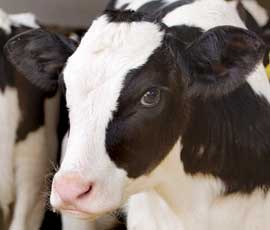Breakthrough in bleeding calf syndrome research

Researchers are one step closer to establishing the cause of bleeding calf syndrome, following the discovery of a new bone marrow biopsy test.
Speaking at the recent Quality Meat Scotland research and development conference in Dundee, Kim Willoughby, head of the viral surveillance unit at the Moredun Institute, said a new Petri dish-based bone marrow biopsy technique should help researchers understand the cause of the disease.
Also known as bovine neonatal pancytopenia (BNP), the disease was linked to the now withdrawn PregSure BVD vaccine, and is caused by antibodies in the colostrum that attack the bone marrow cells of the calf after suckling.
It appears almost exclusively in calves younger than 21 days and causes widespread internal and/or external bleeding. Calves displaying symptoms of the disease are often found bleeding from the nose, small wounds such as ear tagging or injection sites, and blood is found in faeces as a result of bleeding in the intestine.
Despite the vaccine being withdrawn from the marketplace, cases of the disease continue to be reported and it remains a problem in both commercial and pedigree beef herds, said Dr Willoughby.
It was hoped the new testing technique – which allows bone marrow cells from live calves to be grown in Petri dishes – would allow researchers to test larger numbers of animals, rather than relying on testing tissue from dead animals, she said.
“Using this Petri dish method we have shown that, even when the bone marrow looks normal under the microscope, the cells are damaged and do not work properly,” said Dr Willoughby.
She said although it was likely the disease would naturally fade out over time as the number of vaccinated dams producing calves fell, research into the disease would be vital to help prevent a similar disease occurrence in the future.
“We are looking at a situation where 100,000s of doses of vaccine were used and yet only a comparatively small number of calves were effected,” she added.
“One possibility is that it is not the vaccine itself that directly causes the problem, but the individual reaction to the vaccine of specific animals. It is important to understand what triggered the problem,” said Dr Willoughby.
“The fact is a very good BVD vaccine was withdrawn as a result and my hope is that by understanding what is at the root of this problem, we will be better able to design vaccines in the future.”
Vaccine link to bleeding calf syndrome confirmed
